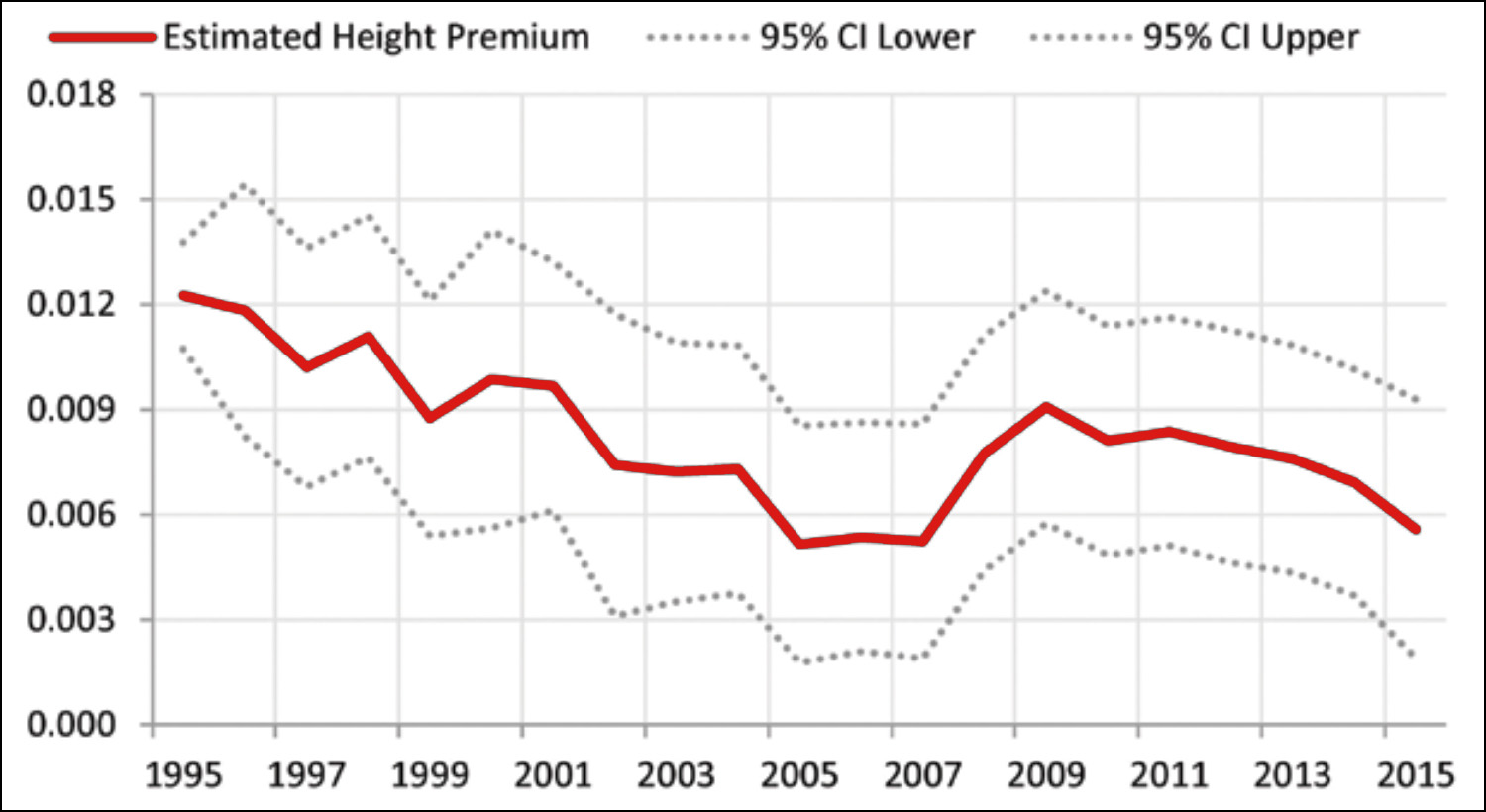I’m just playing around here, but here’s a bit more data on building height in response to my earlier question about why all buildings in a neighborhood aren’t the same height (i.e., whatever height delivers the highest profits). First off, there’s an incentive to build high because people will pay more for offices and condos on upper stories. In New York, however, that height premium has been declining:

Interesting! Nonetheless, no matter what city you’re in, it’s still generally more profitable to build higher since the price per square foot goes down. Here is Dean Dalvit:
For the most common office building size, two to four stories tall, the range is from just over $140 per square foot in Winston-Salem to over $240 per square foot in New York….By taking advantage of savings provided by vertical construction, you will see approximately a 4% savings in cost per square foot by increasing the stories to between five and ten stories….For buildings between eleven and twenty stories tall, there is approximately an 11% savings over the mid rise buildings and 15% over low rise….Over twenty stories starts getting into more unique building characteristics that will drive costs in various ways.
Speaking broadly, then, if a particular neighborhood can support a 20-story building, you’d expect to see a lot of 20-story buildings. But there’s also this:
Even with similar costs per sf developers have different amounts of capital available, different thresholds for acceptable returns, and different tolerances for risk. This all drives variation in project sizes.
— Justin D. (@cznomad) May 7, 2018
In other words, a 20-story building might be the most profitable, but if you only have enough money to build a five-story building, you might go ahead and do that instead of spending time trying to scare up more financing. It’s still profitable, after all.
Beyond this, of course, there are lots of land use restrictions that change over time and can impact building height. The most famous, perhaps, is New York City’s air rights regulation, which limits total building height in an area but allows developers to swap air rights. It’s sort of cap-and-trade for building height. This means that in a neighborhood with, say, a 60-story cap, it might make sense to build a 40-story building and then sell your unused air rights to someone else who wants to build an 80-story building. There’s lots of stuff like that around.
This is just more food for thought, not any kind of final say on this. If you enjoy falling down internet rabbit holes, you might want to try looking into urban design. I do this periodically, and there is no deeper rabbit hole around.

















